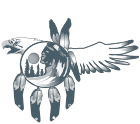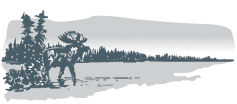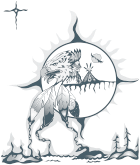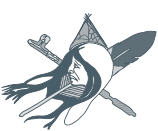
The Land that Gives Life
Harvesting
fRnBIXuPy sSg
Anishinaabeg honour the Creator’s gifts through the continued harvest of plants and animals in a manner that ensures continuity of all life on the land.
When plants and animals become scarce in one area, people join friends and relatives in other areas where resources are more abundant, allowing the stressed resources to recover, only to be harvested again once healthy.
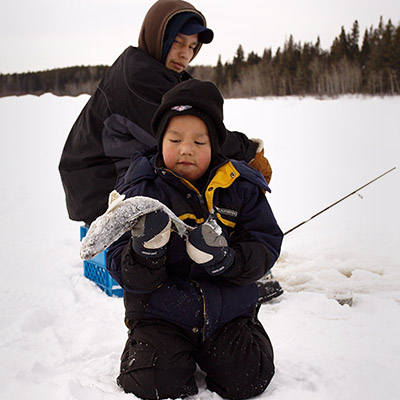
Fishing
Anishinaabeg fish year-round on all of the larger lakes and rivers in Pimachiowin Aki. Spawning sites are well known. Important spring-spawning fish include lake sturgeon, suckers, and walleye. Fall-spawning fish include whitefish and lake trout.
Hunting
Moose
Moose are hunted through most of the year, except mid-summer when the meat is less tasty. The shorter, cooler days of fall and the leafless fall forests provide ideal conditions to hunt moose as they concentrate along the rivers, lakes, and forest openings to mate.
Moose hunting is so important to the Anishinaabeg of Pimachiowin Aki that many children enjoy official breaks from school in order to accompany their families on fall moose hunts.

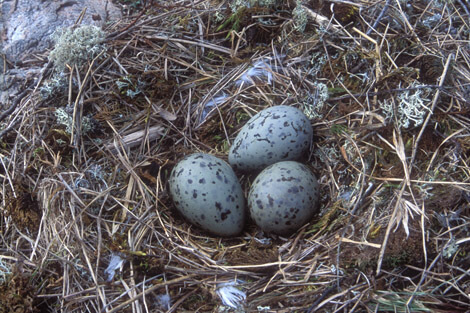
Caribou
Woodland caribou are not often encountered, but they are hunted, especially in the early spring when they can be found in small groups standing on the ice.
Waterfowl
Waterfowl are a particularly important food source in the spring and fall, providing both meat and eggs. Once the ice has melted from the lakes and rivers, Anishinaabeg hunters in Pimachiowin Aki turn their attention to the well-known gathering sites where geese, ducks and gulls are nesting and migrating.

Trapping
There is a general practice among Anishinaabeg that specific family groups are stewards of specific areas, including trapline areas. Traplines cover Pimachiowin Aki, expressing the ancient and living tradition of keeping the land.
Furbearers
Anishinaabeg trap beaver, fisher, weasel, red fox, river otter, lynx, muskrat, snowshoe hare, and pine marten. Trapping takes place in winter and early spring, when pelts are thickest and animal trails are easiest to identify.
Registered Traplines
Today, a Registered Trapline (RTL) system is in place to help sustain furbearer populations.
Before registered traplines, there were no lines on a map showing the area, but everyone knew where it was. The head of the family would make the decisions about the land. If there was a shortage of beaver or muskrat, for example, they would leave the area alone until the populations increased, to ensure future use of these resources.
Ed Hudson
Culturally Modified Harvest Sites
Anishinaabeg use their knowledge and oral history to modify harvest sites in subtle ways that promote the natural diversity of the boreal forest.
Wild Rice
Manoomin (northern wild rice) is harvested across Pimachiowin Aki. Manoomin stands are significant for their role in supporting the biodiversity of the boreal forest, providing a source of food, medicine, and shelter for a variety of animals that Anishinaabeg harvest, such as beaver, ducks, and geese, and for millions of migratory and resident birds.
Manoomin is a culturally important food and medicine for Anishinaabeg, and an important part of ceremonial feasts. The shallower margins of manoomin stands are often habitat for wiikenzh, or sweet flag, an important medicinal plant for Anishinaabeg.

Birch Bark
Anishinaabeg harvest birch bark by removing portions of the bark from birch trees. The trees remain alive. They are found among the larger stands of paper birch that grow along the main rivers of Pimachiowin Aki. Birch bark is used to make:
- Baskets
- Horns for calling moose in the fall hunt
- Coverings for wigwams
- Canoes
 Our Work
Our Work  Donate
Donate 